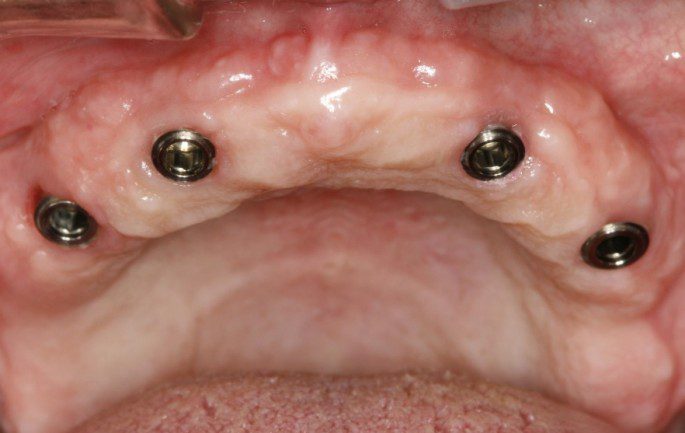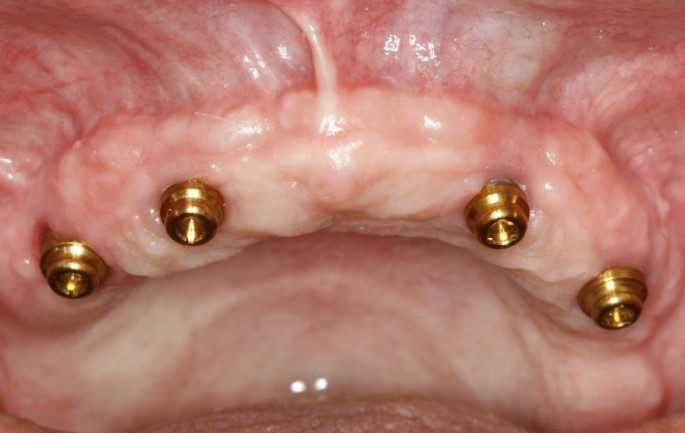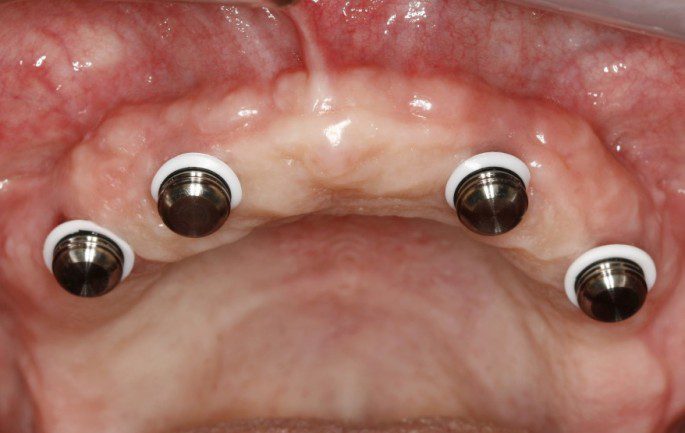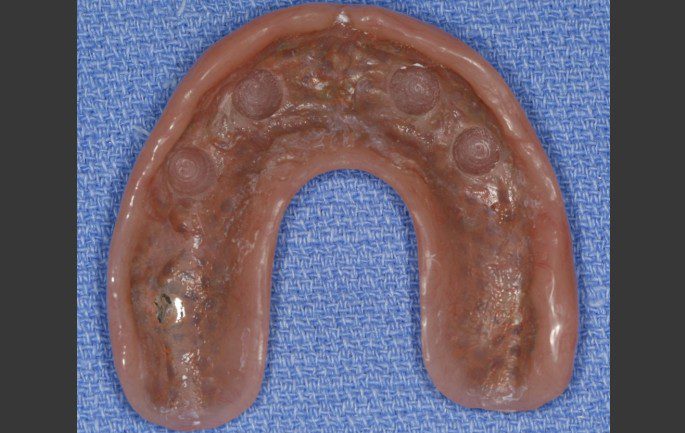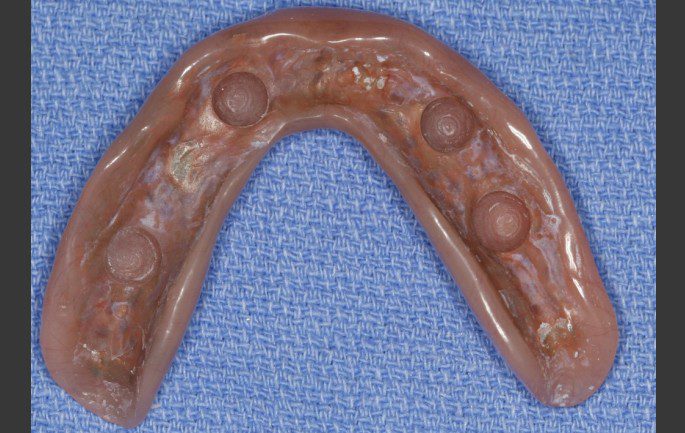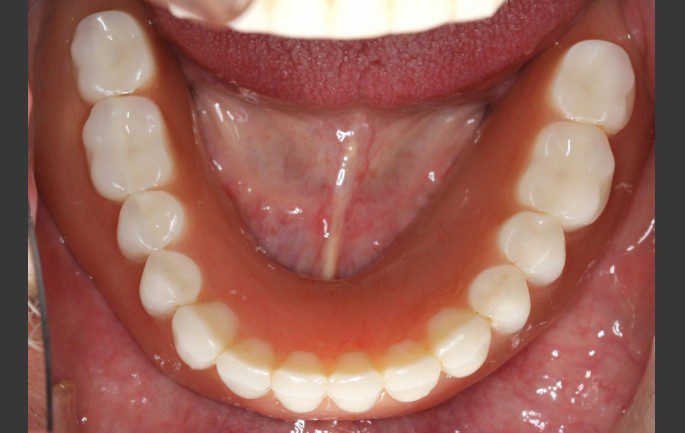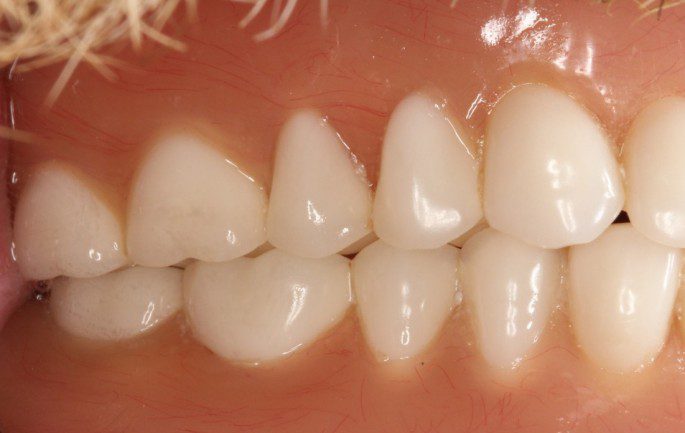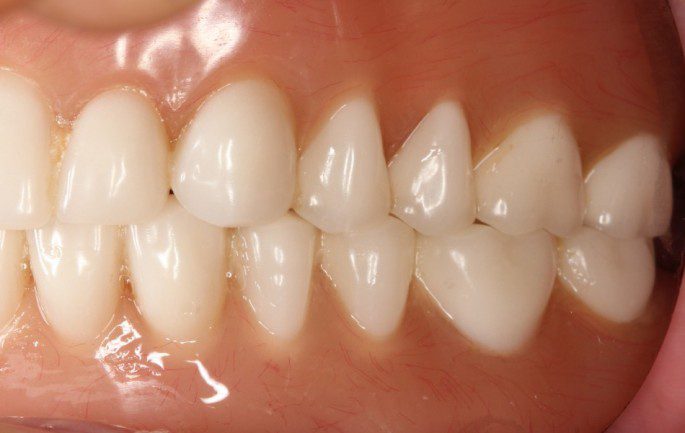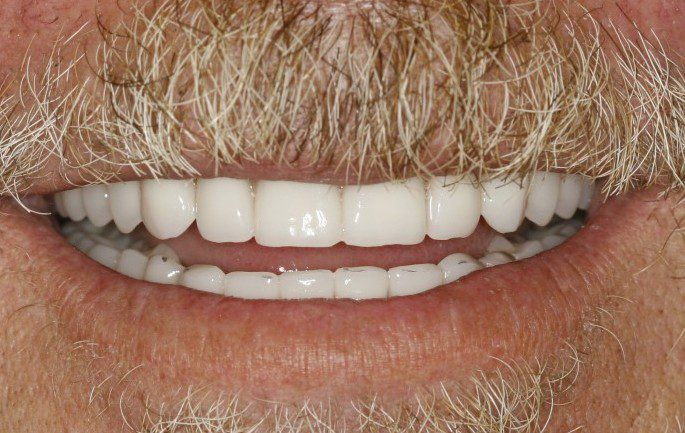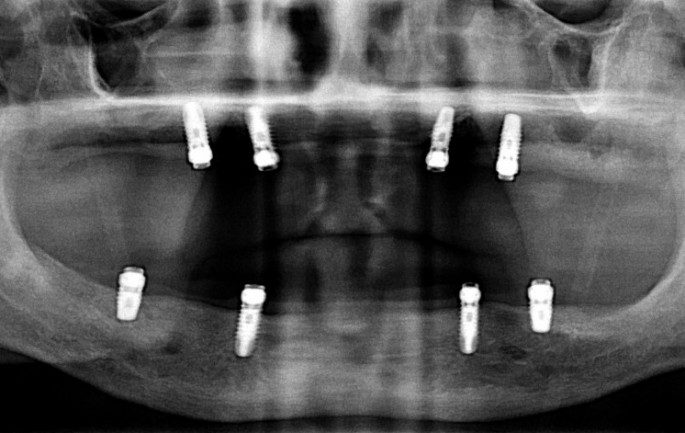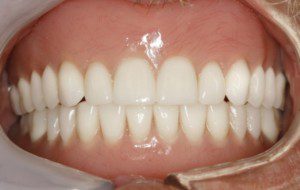
1 of 20
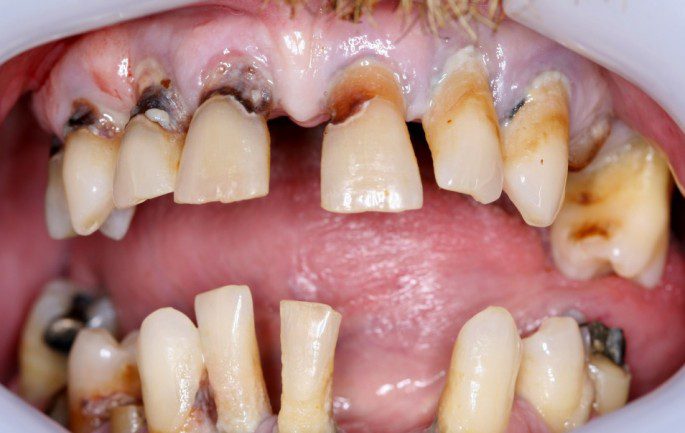
"Hopeless" teeth. This patient suffers from both of the main causes of tooth loss in adults, cavities (caries) and bone loss (periodontal disease). He seeks treatment options that will restore his function, remove his pain and provide a nice smile. One of the most cost effective, comfortable and functional options for a full mouth or a full arch treatment is "implant overdentures". Implant overdentures are removable but are held into the mouth when the snap onto dental implants. Implant overdentures can be made with 2, 3 or 4 implants per arch. Stability and function improve with the addition of implants beyond 2. In the upper arch, most of the palate of the denture can be removed if four implants are used. The palate of the denture is the most objectionable part of having an upper denture. When the palate is covered by the plastic of the denture it decreases chewing pleasure by not allowing the hot and cold sensations to reach the palate and it also decreases taste sensation. Patients rave about the open palate when it is removed with four dental implants.
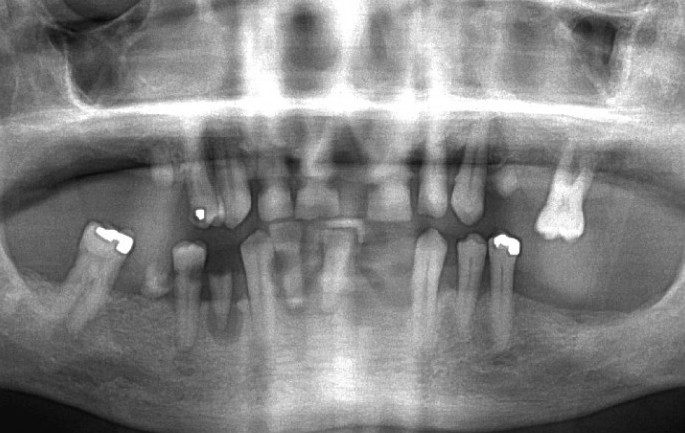
Panoramic x-ray of hopeless teeth. Note the severe cavities and severe bone loss. Several bad teeth have been untreated long enough to have dental abscesses. An abscess a pocket of infection at the tip of the root where dead pulp tissue and bacteria accumulate. This patient has bacteria from periodontal disease and bacteria from tooth infections. In cases with this much active infection we often extract the teeth and delay the implant placement to give the body time to clear the infection. This is what we did for this patient. The teeth were extracted, immediate temporary dentures were delivered and he healed for four months.
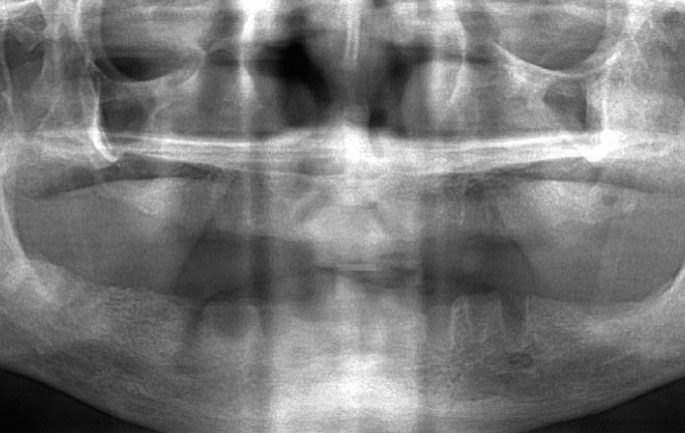
Patient has healed for approximately four months. He is now ready for implant placement. He continues to wear his temporary dentures. NO ONE leaves the office without teeth. NEVER!
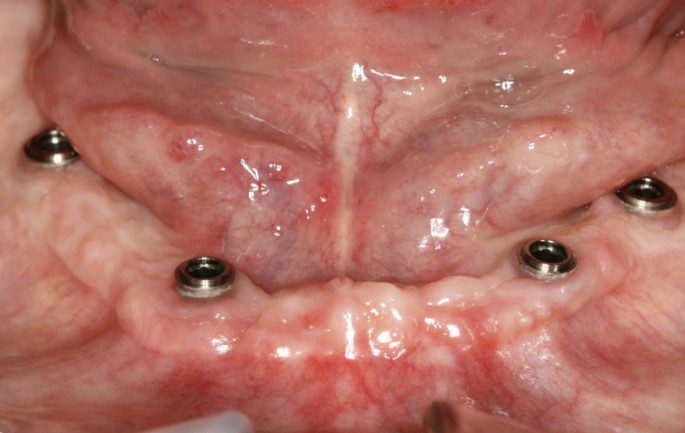
Four dental implants were placed in the lower arch. Just like the legs of a chair, the further apart the legs the more stable the chair. The same is true for implants. When the bone permits, we place the implants as far apart as the anatomy allows. This takes longer than placing them in the front of the mouth, so, some offices are not willing to spread them out. Here at the Dental Implant Center we always try to do what's best for the patient.
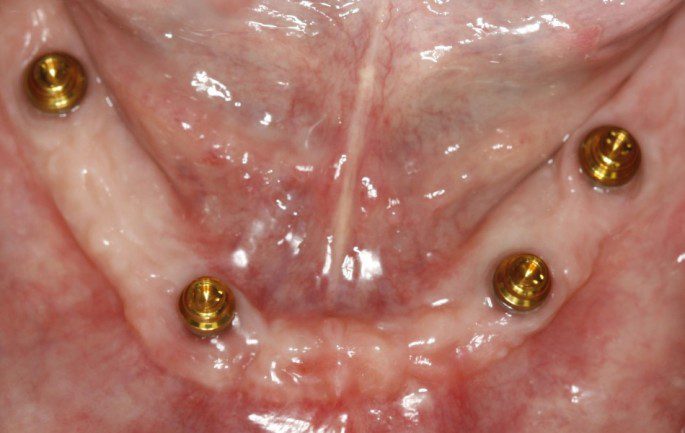
Locator abutments on the lower implants. "Locator" abutments are the most popular and simple attachment system in implant dentistry. They work using a friction fit between the abutment seen in this picture and the attachment seen in pictures 8 and 9.
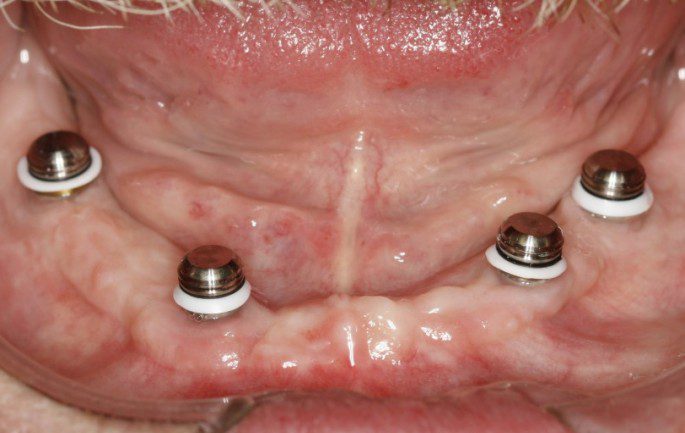
Lower Locator attachments snapped onto the Locator abutments. These attachments are now ready to transfer to the dentures. Intra-oral transfer is a far superior technique for the attachment system to perform optimally. By transferring the attachment to the denture in the mouth we are preventing all the errors that can occur through material shortcomings like acrylic shrinkage and human error in processing.
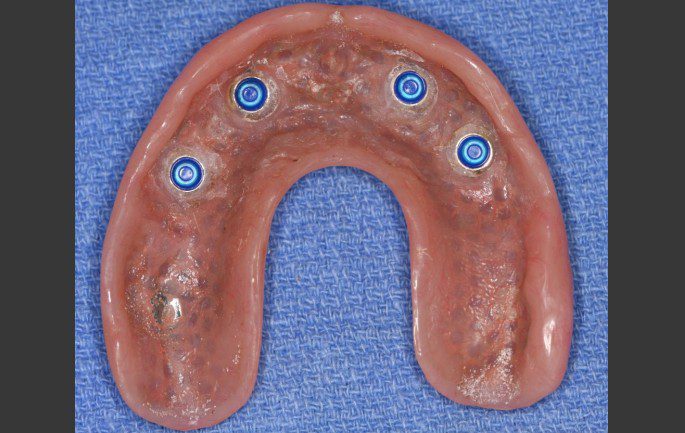
Attachments transferred to the overdenture. Blue colored attachments have about 4 pounds of retentive force, each. Here, this provides the patient with approximately 16 pounds of retention resistance. Image the difference between this and a complete denture without implants.
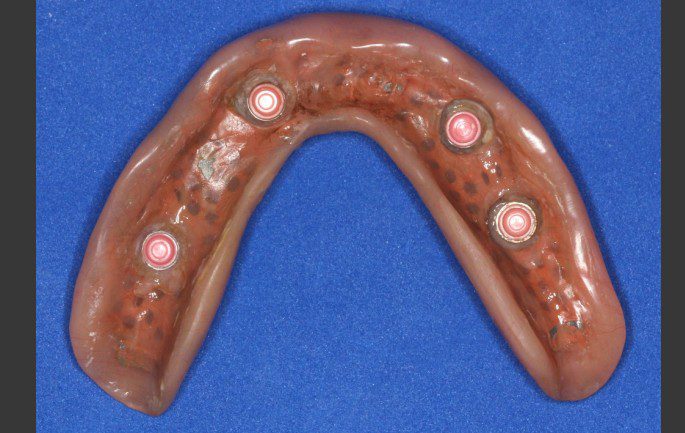
Lower overdenture with attachments transferred. Here, pink attachments are approximately 3 pounds each resulting in 12 pounds of retentive force.
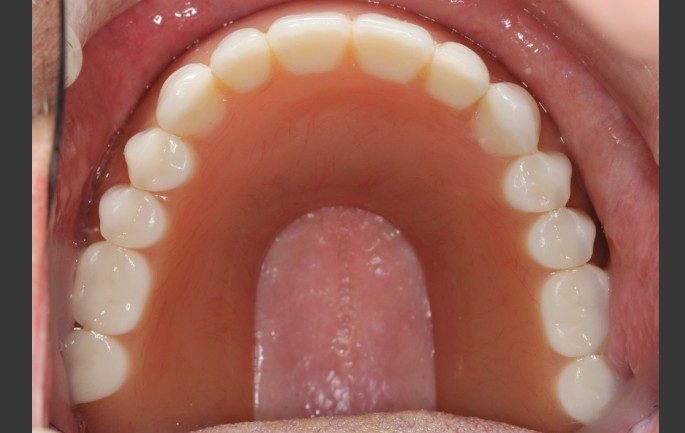
Upper implant denture snapped onto implants. Note the open palate for improved comfort, taste and eating pleasure.
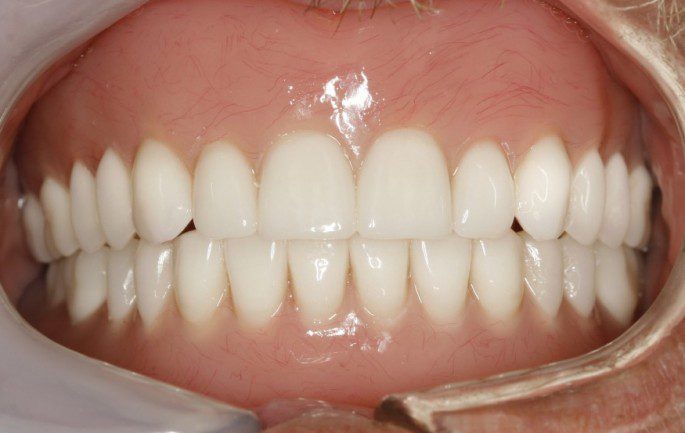
Close-up frontal view of finished implant overdentures. This patient now has 28 pounds of retention afforded by 8 dental implants. His function (chewing ability) is close to 100% restored as compared to conventional dentures which function at approximately 30%.

